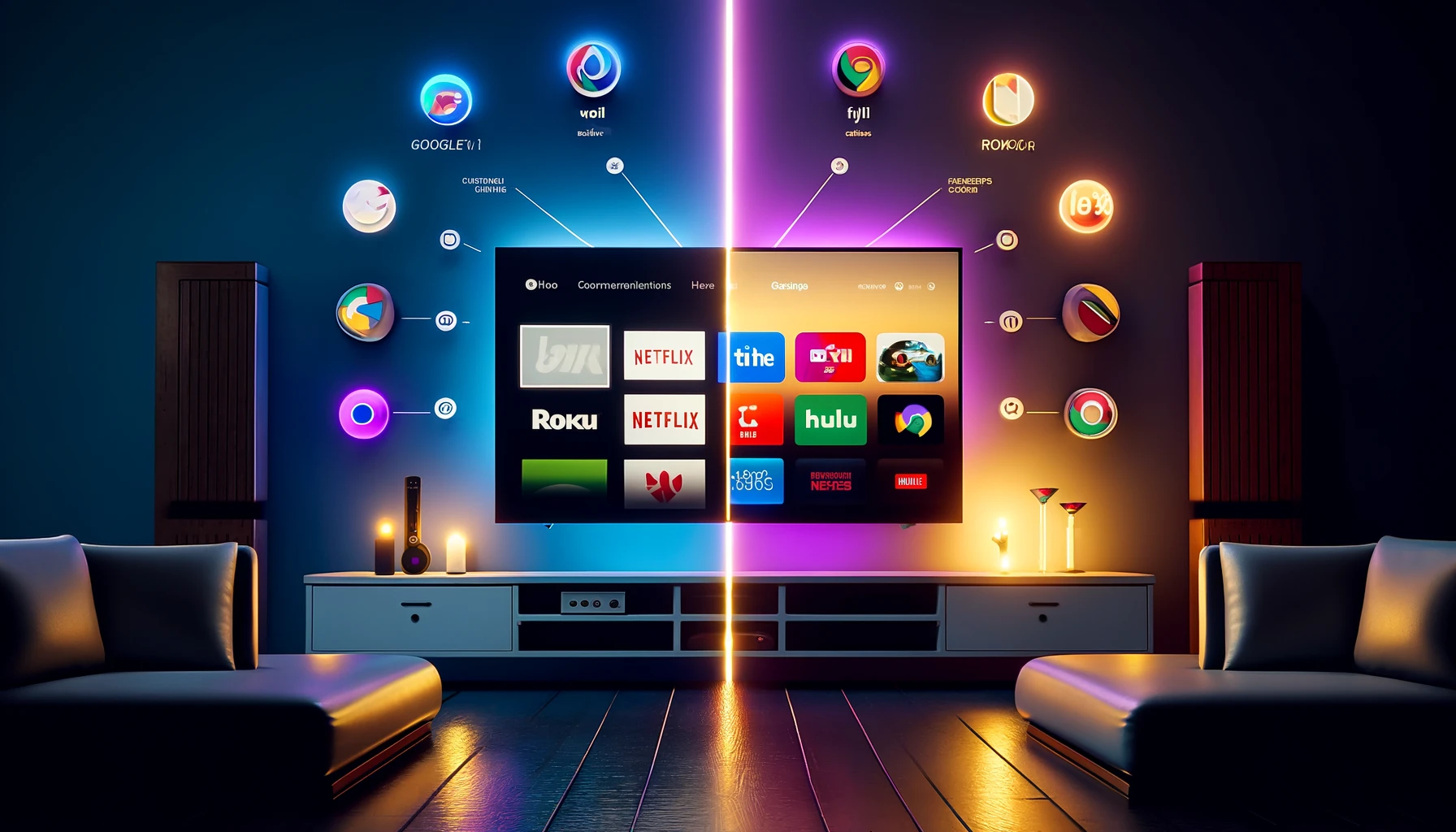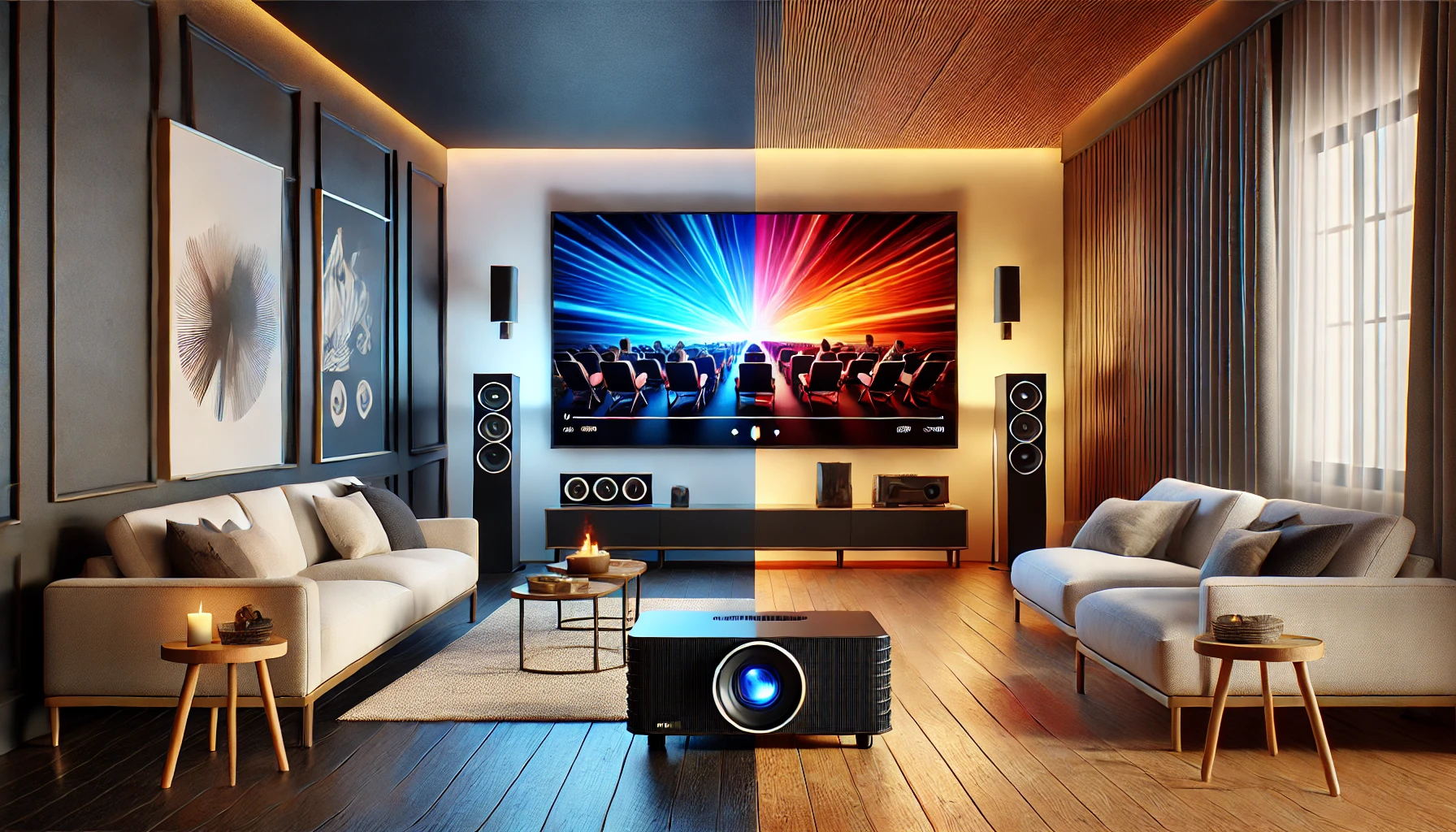When you compare the Google Nest Hub Max and the Amazon Echo Show 15, both devices cater to different user preferences. The Nest Hub Max features a 10.1-inch display and excels in audio quality, ideal for music and video playback, while integrating seamlessly with Google Assistant. In contrast, the Echo Show 15 has a larger 15.6-inch display with a focus on home management and clearer vocals, but may have a steeper learning curve due to its complex interface. Your choice will depend on your needs for audio, display size, and ecosystem familiarity, where further details can enhance your decision-making process.
Key Takeaways
- The Google Nest Hub Max features a 10.1-inch display, while the Amazon Echo Show 15 offers a larger 15.6-inch screen for enhanced viewing.
- Google Nest Hub Max delivers superior audio quality with a 30-watt speaker, ideal for music and video, compared to Echo Show 15’s focus on clarity.
- Integration with Google Assistant makes the Nest Hub Max more intuitive for users familiar with Google’s ecosystem, while Echo Show 15 excels with Alexa.
- Pricing is competitive, with the Nest Hub Max at approximately $229 and Echo Show 15 at around $249, reflecting their feature sets.
- Voice recognition on Google Nest Hub Max is more advanced, effectively understanding natural language, whereas Echo Show 15 occasionally struggles with complex commands.
Overview of Smart Displays
When exploring the world of smart displays, you’ll find that they serve as multifunctional devices designed to enhance your home experience. These devices have evolved considerably, reflecting the latest smart display trends. For instance, integration with smart home ecosystems is a key feature, allowing you to control lights, thermostats, and security systems seamlessly.
User demographics play an essential role in shaping the functionality and design of smart displays. Younger users typically gravitate toward devices that prioritize entertainment, like streaming services and video calls, while older users may prefer features that enhance accessibility, such as larger displays and voice control. This diversity in user needs has spurred manufacturers to innovate continuously, ensuring there’s a smart display that caters to everyone.
Moreover, the rise of voice-activated assistants has transformed how you interact with these devices, making them more intuitive and user-friendly. Smart displays are no longer just for checking the weather or playing music; they’re becoming central hubs for information and connectivity in your home. As you consider your options, keep these trends and demographics in mind to choose a device that truly fits your lifestyle.
Design and Build Quality
The design and build quality of smart displays play a significant role in their overall user experience, influencing not just aesthetics but functionality as well. When you compare the Google Nest Hub Max and the Amazon Echo Show 15, you’ll notice distinct material choices that cater to different preferences.
The Nest Hub Max features a sleek, minimalist design with a fabric-covered base, giving it a soft, modern aesthetic appeal. The display is framed with a durable plastic, which helps maintain a lightweight structure while still feeling sturdy. This design choice makes it easy to integrate into various home environments.
On the other hand, the Echo Show 15 leans towards a more robust build with a wooden or plastic frame, depending on the model. Its larger screen and wall-mounting capabilities cater to a different aesthetic appeal, aimed at making it a central home fixture. The choice of materials here emphasizes durability and a more traditional look.
Ultimately, both devices offer unique designs that reflect their brand philosophies, allowing you to choose based on what fits best within your living space.
Display and Visual Features
Examining the display and visual features of smart displays reveals how each device enhances user interaction and content consumption. Both the Google Nest Hub Max and the Amazon Echo Show 15 offer impressive visual experiences, but their specifications differ.
| Feature | Google Nest Hub Max | Amazon Echo Show 15 |
|---|---|---|
| Display Size | 10.1 inches | 15.6 inches |
| Resolution | 1280 x 800 | 1920 x 1080 |
| Display Brightness | 400 nits | 300 nits |
| Touchscreen Responsiveness | Excellent | Good |
| Orientation | Landscape/Portrait | Landscape |
The Nest Hub Max features a smaller yet brighter display, making it easier to view in various lighting conditions. With a higher display brightness of 400 nits, it enhances visibility, especially in daylight. The touchscreen responsiveness is excellent, allowing you to navigate effortlessly.
On the other hand, the Echo Show 15 boasts a larger screen, providing a more immersive viewing experience. Although its display brightness is lower, the higher resolution compensates, ensuring clearer visuals. Its touchscreen responsiveness is good, but not as fluid as that of the Nest Hub Max. Ultimately, your choice depends on your preferences for size and brightness.
Audio Performance Comparison
When comparing the audio performance of the Google Nest Hub Max and the Amazon Echo Show 15, you’ll want to evaluate speaker quality, sound clarity, and volume output. Each device offers distinct advantages in these areas, impacting your overall listening experience. Let’s break down how they stack up against each other.
Speaker Quality Assessment
In comparing the speaker quality of the Google Nest Hub Max and the Amazon Echo Show 15, you’ll find distinct differences that cater to varying audio preferences. The Nest Hub Max features a robust 30-watt speaker capable of delivering well-rounded audio, which is great for streaming music or watching videos. Its design emphasizes audio versatility, ensuring that it performs admirably across different genres.
On the other hand, the Echo Show 15 boasts a slightly less powerful speaker but compensates with impressive clarity and speaker durability. While it may not produce the same depth as the Nest Hub Max, it excels in providing clear vocals, making it ideal for news updates and podcasts.
If you’re someone who values a more immersive experience, the Nest Hub Max might be more suitable. However, if durability and dependable sound quality are your priorities, the Echo Show 15 stands strong. Ultimately, your choice will depend on how you plan to use these devices—whether for casual listening or more serious audio enjoyment. Each option has its strengths, ensuring that there’s something for everyone in this competitive market.
Sound Clarity Evaluation
Clarity is paramount when it comes to audio performance, and both the Google Nest Hub Max and the Amazon Echo Show 15 offer unique strengths in this area. The Nest Hub Max excels in its sound range, providing a rich auditory experience that captures the subtleties of both music and spoken audio. You’ll notice that its acoustic balance tends to favor mid-range frequencies, which enhances dialogue clarity during video calls or when streaming content.
On the other hand, the Echo Show 15 also delivers impressive sound clarity, though it leans slightly towards a more bass-heavy profile. This can create a fuller sound for music, but it may slightly overshadow finer details that the Nest Hub Max handles more gracefully. If you prioritize crisp vocals and clear highs, you might find the Nest Hub Max more to your liking.
Volume Output Comparison
For those who value volume output in smart displays, both the Google Nest Hub Max and the Amazon Echo Show 15 have distinct characteristics. When it comes to loudness perception, these devices deliver different audio experiences influenced by their design and volume control features.
| Feature | Google Nest Hub Max | Amazon Echo Show 15 |
|---|---|---|
| Speaker Size | 10W | 5W |
| Max Volume Level | 75 dB | 80 dB |
| Bass Response | Enhanced | Moderate |
| Volume Control Options | Adaptive | Manual |
The Google Nest Hub Max boasts a larger speaker, offering a richer bass response, which can enhance your listening experience, especially for music and videos. In contrast, the Amazon Echo Show 15, while having a smaller speaker, achieves a higher maximum volume. This can be beneficial for clear dialogue in videos or video calls.
Ultimately, your choice may boil down to personal preference regarding volume control features and the type of content you typically enjoy. If you prioritize deeper bass, the Nest Hub Max may suit you better, while the Echo Show 15 excels in sheer loudness.
Smart Home Integration
When it comes to smart home integration, both the Google Nest Hub Max and the Amazon Echo Show 15 offer robust ecosystems that cater to diverse user needs. The Nest Hub Max excels in its compatibility with Google’s ecosystem, allowing you to seamlessly control various smart home devices like lights, thermostats, and cameras. Its integration with Google Assistant makes managing your smart home intuitive, providing a user-friendly interface for monitoring and automating tasks.
On the other hand, the Amazon Echo Show 15 shines through its compatibility with a wide range of devices, thanks to its integration with Amazon Alexa. You’ll find that it supports a vast array of third-party devices, enhancing its flexibility in a smart home setup. Its visual interface makes it easy to see and manage connected devices, while also allowing for customizable widgets that can display information pertinent to your daily routine.
Ultimately, both devices present strong smart home integration, but your choice may hinge on your existing ecosystem. If you’re invested in Google services, the Nest Hub Max could be the better fit, whereas the Echo Show 15 offers broader compatibility across various device brands.
Voice Assistant Capabilities
When comparing the Google Nest Hub Max and the Amazon Echo Show 15, the efficiency of their assistant integrations is essential for your daily interactions. You’ll want to take into account how well each device recognizes your voice and responds accurately to commands. Understanding these capabilities can greatly influence your overall user experience.
Assistant Integration Efficiency
In the domain of smart displays, assistant integration efficiency plays a critical role in user experience, particularly with the Google Nest Hub Max and Amazon Echo Show 15. These devices offer distinct advantages in app compatibility and automation features, shaping how you interact with your smart home.
The Google Nest Hub Max excels in its seamless integration with Google services. You’ll find it easy to access various apps, stream music, or manage your calendar. Additionally, its automation features, particularly with Google Assistant, allow you to create routines that can control multiple devices with a single command. This level of integration streamlines tasks and enhances your smart home experience.
On the other hand, the Amazon Echo Show 15 focuses on compatibility primarily with Amazon services and third-party apps. While it supports many popular applications, its efficiency may lag compared to the Nest Hub Max when it comes to automation features. You can set up routines through Alexa, but the depth of integration might not feel as intuitive or cohesive.
Ultimately, each device offers unique strengths in assistant integration efficiency, but your choice will likely depend on the ecosystem you’re already invested in.
Voice Recognition Accuracy
Voice recognition accuracy greatly impacts how effectively you can interact with smart displays like the Google Nest Hub Max and Amazon Echo Show 15. When comparing voice recognition capabilities, both devices have strengths and weaknesses that can influence your experience.
The Google Nest Hub Max leverages Google Assistant’s advanced algorithms and extensive language processing capabilities. This often results in higher accuracy, especially in understanding natural language and context. It’s designed to handle various accents and dialects, making it user-friendly for a diverse audience.
On the other hand, the Amazon Echo Show 15 utilizes Alexa’s voice recognition technology, which has improved considerably over the years. While it performs well in most scenarios, some users report occasional misunderstandings, particularly with complex commands or less common phrases.
In an accuracy comparison, the Google Nest Hub Max tends to shine in more nuanced interactions, while the Echo Show 15 is reliable for straightforward tasks. Ultimately, your choice might depend on your specific needs and how you plan to use the device. Understanding these nuances can help you make a more informed decision.
User Interface and Experience
The user interface and experience of both the Google Nest Hub Max and the Amazon Echo Show 15 play an essential role in how effectively you can interact with these smart displays. The Nest Hub Max features a clean, minimalist design that prioritizes user customization options, allowing you to personalize the layout and widgets based on your preferences. Its responsive touch screen and intuitive navigation make it easy for you to access various features, from smart home controls to video calls.
On the other hand, the Echo Show 15 offers a larger display with a more complex interface. While it boasts impressive usability features, such as customizable widgets and a “Home” screen that adapts to your routines, the overall experience can be slightly overwhelming for new users. The Echo Show 15’s interface is more geared toward multitasking, which might require a learning curve.
Ultimately, your choice may depend on how much you value user customization options and the simplicity of usability features. If you prefer a straightforward experience, the Nest Hub Max might be your best bet, whereas the Echo Show 15 shines with its extensive capabilities.
Pricing and Value
When considering user experience, it’s also important to evaluate pricing and value, as these factors can greatly impact your decision. The Google Nest Hub Max and Amazon Echo Show 15 adopt different pricing strategies that reflect their respective features and target audiences. The Nest Hub Max is typically priced around $229, while the Echo Show 15 is around $249.
At first glance, this might suggest that the Echo Show 15 offers more value for the additional cost, but it’s crucial to dig deeper into the features each device provides. The Nest Hub Max includes a camera for video calls and a larger display for media consumption, which can be seen as added value for those focused on communication and entertainment. In contrast, the Echo Show 15 emphasizes a larger screen for displaying information, smart home controls, and family organization, which might be more appealing to users prioritizing home management.
Ultimately, your value comparison should hinge on what features matter most to you. Evaluating these pricing strategies in relation to the functionalities offered will help you determine which device aligns best with your needs and budget.
Final Thoughts on Selection
Ultimately, choosing between the Google Nest Hub Max and the Amazon Echo Show 15 often hinges on your specific needs and preferences. Consider how you plan to use these devices in your daily life. If you’re deeply integrated into the Google ecosystem, the Nest Hub Max is likely a better fit, offering seamless integration with Google services and a more intuitive interface for managing smart home devices.
On the other hand, if you’re invested in Amazon’s ecosystem, the Echo Show 15 may better serve your needs, especially with its broader range of compatible smart home products and Alexa’s extensive capabilities.
User preferences play a vital role in this decision. Those who appreciate a larger screen for video calls or streaming may lean toward the Echo Show 15. However, if you prioritize video quality and a more compact design for kitchens or smaller spaces, the Nest Hub Max is appealing.
Ultimately, evaluate your usage scenarios. Whether you want a central hub for family communication, media consumption, or home automation will greatly influence your choice between these two smart displays.
Frequently Asked Questions
What Are the Dimensions of Each Smart Display?
When considering smart display dimensions, it’s crucial to look at device size comparison. Each model varies greatly, impacting usability and space requirements. You’ll want to measure carefully to guarantee they fit your setup perfectly.
Can I Use These Devices Without a Smart Home Setup?
You don’t need a smart home setup to use these devices. Their voice assistant capabilities work independently, and you can easily adjust display brightness for comfortable viewing, making them versatile additions to any space.
How Do They Handle Video Calls?
When handling video calls, both devices emphasize video quality and call stability. You’ll find that they maintain a solid connection, ensuring a smooth experience. However, performance can vary based on your internet speed and network conditions.
Are There Any Parental Controls Available?
In the digital age, safeguarding young minds is essential. Both devices offer parental restrictions and content filtering, enabling you to curate appropriate content. This guarantees a safer environment for your kids while they explore technology.
What Streaming Services Are Supported on Each Device?
Both devices offer impressive streaming compatibility, supporting popular services like Netflix, YouTube, and Hulu. However, service availability can differ based on the device and region, so it’s wise to check the specifics for your needs.
Conclusion
In choosing between the Google Nest Hub Max and the Amazon Echo Show 15, think of it as picking between two skilled chefs in a culinary competition. Each offers unique strengths, from design to voice assistant capabilities. If you’re all about seamless smart home integration, the Nest Hub Max might be your pick. However, if you prefer a larger display and robust media features, the Echo Show 15 could serve you better. Ultimately, it depends on your specific needs and preferences.






